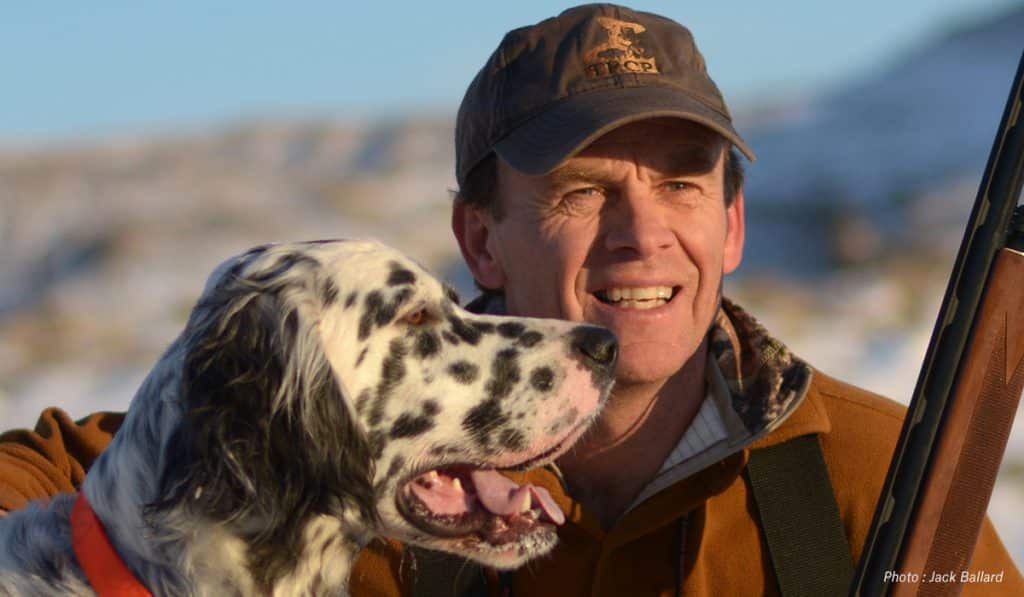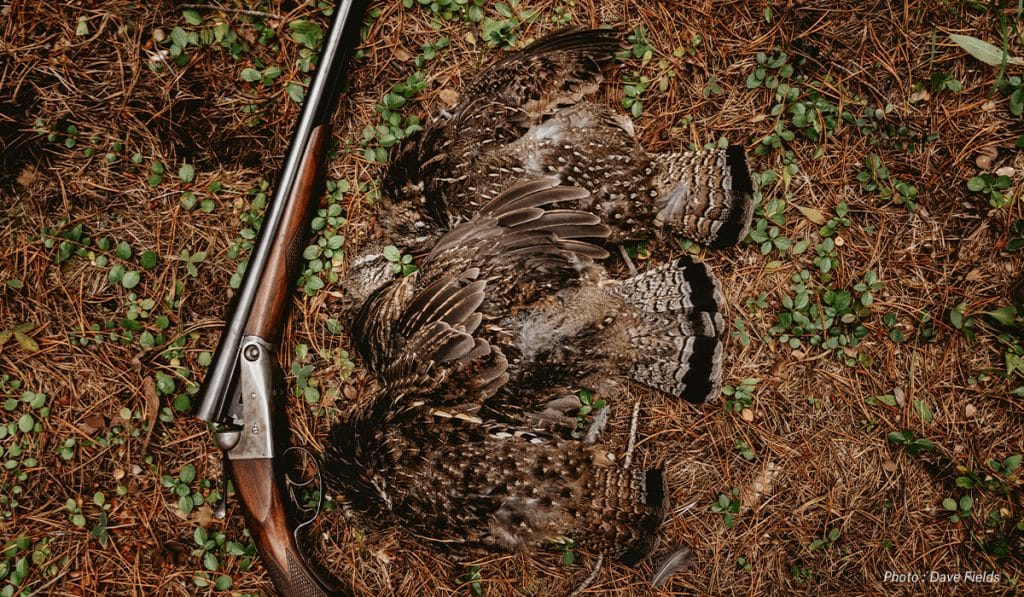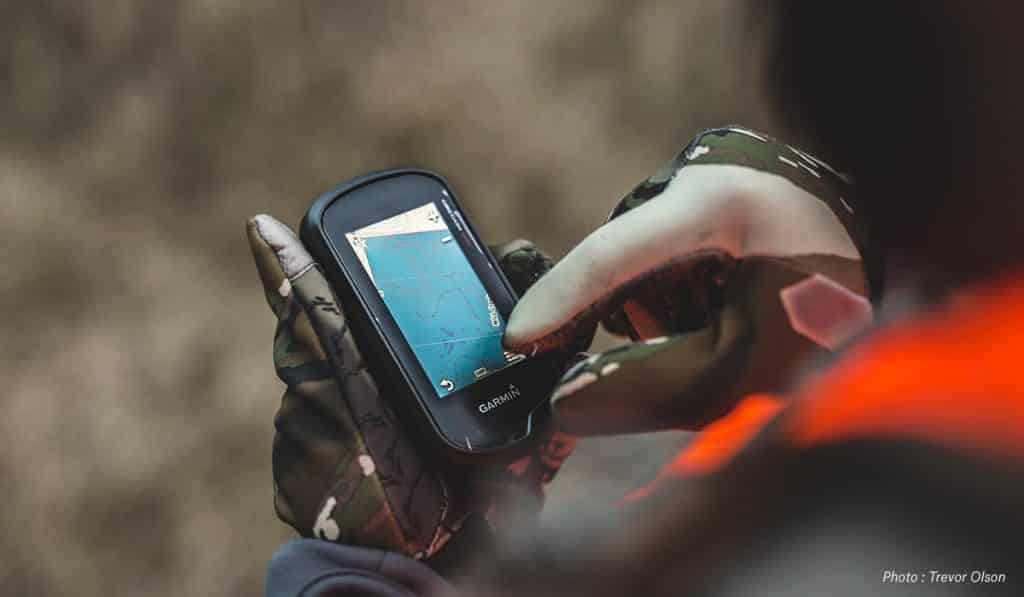A new series of exclusive interviews with living legends in the hunting world. We define success differently than Boone and Crockett scores or getting the Big Five. Instead, we have candid conversations with hunters about how they got started in hunting, what it means to them today, and what issues are important to them for preserving the future of hunting for the next generation.
As far as hunting “how-to” writing goes, you’ll find Jack Ballard’s byline on an encyclopedia’s worth of information. Mix in topics like fishing, traveling, and grizzly bears and you’ll start to get the picture of what Ballard is both passionate and knowledgeable about. A career that includes entire books written about elk hunting on public lands, creating the perfect traditional elk camp, and a Falcon Field Guide on grizzly bears, Ballard’s words have appeared in over 50 different regional and national magazines, and he’s received multiple awards for his writing and photography from the Outdoor Writers Association of America and other professional organizations. So when we wanted to kick off the Hunting Legends series, we knew we wanted to start with Jack Ballard.

When did you start hunting?
I grew up on a ranch between Three Forks and Whitehall (Montana), and my dad was an avid big game hunter. He hunted mostly mule deer and antelope a little bit on the ranch, but every year he went elk hunting. So I kind of grew up with it and really just by osmosis I wanted to do that. I got a little Daisy BB gun when I was six years old and started shooting mice in the henhouse with a flashlight at night. With that I kind of thought I was a big game hunter. Honestly, though, I can’t think of a time in my life when I didn’t think of myself as a hunter.
The second animal I ever killed was a mule deer I shot on the backside of the ranch when I was a freshman or sophomore in high school. I was hunting completely by myself. I shot that mule deer in late afternoon and gutted it out myself, only relying on what I had seen my dad and older brothers do with their animals. When I walked back it was kind of dark by the time I got home, and that, I think, would be the experience where I felt I was a real hunter in my own right.
Has your perspective on hunting changed over the years?
It’s changed a lot. When I was a young guy in my teens and then my twenties, I had seen my dad shoot a couple big mule deer and I had read Outdoor Life magazine, so I picked up the “trophy bug,” so to speak. I wanted to have a head or two on my own wall. I was really motivated that way, and I killed some pretty good animals. But I’m to the point now that I get more satisfaction out of hunting by helping my wife, who did not grow up as a hunter, as well as my daughter, and all my kids. It really doesn’t matter anymore if I’m the guy who pulls the trigger or not.
I also used to be very, very protective of where I hunt, but now I’m a little bit less so, particularly in relation to novice hunters. I got a call recently from a lady who had read an article I wrote for Montana Outdoors, and she and her husband had gone turkey hunting in southeast Montana but didn’t do very well. So she called to ask me if I could give her any more direction, and I told her exactly where to go in Custer National Forest because I wanted her to be successful. In that respect, if you can help people be successful when they’re doing a reasonable amount of work that’s about as good a legacy as you’re going to pass on as a hunter.

What do you enjoy hunting these days?
I grew up as a big game hunter. I wrote about big game hunting for most of my career, and I will always like hunting elk. But I really am enjoying the challenge of learning something relatively new for me in relation to upland bird hunting and waterfowl.
So I’m really into bird hunting now, and I enjoy working with my dog. I have an English Setter and his name is Percy. Percy’s reasonably famous in his own right. His picture has been in about 10 different magazines, but he’s a little bit of an oddball. As a setter, he loves upland bird hunting, but I think if you gave him the choice he would probably maybe hunt ducks. He’s just a waterfowl retrieving machine.
How did you make a career out of writing about hunting?
I have two graduate degrees and I did a lot of writing in the completion of those, so I was comfortable organizing and writing things. And I was always a pretty voracious reader, especially of outdoor magazines and books. At some point, maybe when I was around 30, I started looking at this stuff and thinking that maybe I could do this.
I started out writing, but I was able to dabble in photography too. I got very interested in wildlife photography. At one point I was more motivated as a photographer than a writer. I found out, at least in the magazine world, if I could write an article I could use that as a vehicle to publish my photos. Otherwise you’re sitting on your thumbs waiting for someone to need photos of something you have. It was so different then, back when you typed your manuscripts and sent your transparencies in the mail.
As I was writing more, I got into the idea that anybody could get lucky with a photo. You could be at the right place at the right time and just kill it. But you can’t do that with writing. You can’t luck out and write a good story. I started to embrace the challenge to improve my own writing and be a better descriptive writer. Now I see myself as more of a writer than a photographer.
I started writing mostly hunting pieces, and then I branched out to wildlife, fishing, and on and on. I’ve written 13 books, but I still don’t feel like I’ve had the opportunity to write a particularly outstanding piece of creative writing. Although I am very proud of Large Mammals of the Rocky Mountains. It was a big project, and I got great feedback on it. It’s for hunters, or the layperson, or even wildlife professionals. If you want to know the basics but go in-depth on any of those species the book covers it well I think.

How do you use onX Hunt in the field?
I started using onX back when it was HuntingGPSMaps, so quite a long while ago. I don’t think you can overestimate how that mapping ability changed the game for public lands hunters–to really know where you are.
In some places in Montana, I’ve run into situations where either it’s flat out illegally posted or ambiguously posted. So you look at it and think how you don’t want to be the guy who gets in trouble and so you don’t go in there. But with that ability to look at your GPS and know 100 percent that you’re on public land, it’s just a gamechanger.
I have my unit on in my vehicle all the time when I’m driving around. Even this season, my youngest son came down to hang out with me and shoot some photographs. I took him up to Glendive to catch a flight home, and when I was driving back to my camp I was saying, “Oh, this public land I’m driving by has a creek bottom that looks like pretty good pheasant habitat.” I whipped in there and got the dog out. An hour later we had two roosters and two gray partridges. Now I don’t have to look at a traditional map and worry about where the boundaries are. I’ve always primarily hunted on public lands, and it’s been a game-changer in being confident and grabbing the opportunities that present themselves.
What advice do you have for people who want to start hunting?
I’ve written quite a bit about that, and I’ve gotten calls and emails from people. I try to give them confidence and tell them that you can’t do this wrong. If you’re worried about how to field dress your animal, you know, if you get the guts out who gives a shit how you did it. Just get in there and do it. That’s how you figure it out.
Yes, go practice at the range a little bit, but take a close shot and don’t worry about it. If you’ve practiced a little bit and you get close enough to the animal the result is probably going to be just fine.
I just try to demystify it as much as possible, and I also encourage people that if they have any access to somebody who can be a mentor, or someone to go out with the first time or two, it makes it so much easier.
What poses a risk to hunting?
I think we’ve done a pretty good job as sportsmen and outdoors-folks of beating back the threat of losing public lands. For instance, when federal lands get transferred to the state and then the state sells them. I think we’ve done a reasonably good job of beating that back.
The next two challenges that I see, especially in Montana, are opening up those landlocked, inaccessible parcels of public lands to public access. I think with our growing population if we’re going to have the same kind of public land hunting experience in 10 years that we have now, we have to increase access.
The other thing, which is not really sexy, that I’m becoming increasingly concerned about is the degradation of wildlife habitat primarily due to invasive species (cheatgrass, knapweed, leafy spurge). I’ve seen in the places that I’ve hunted for 30 years more and more habitat degradation due to those invasive plant species. At some point, I think governments need to step up and fund aggressive, comprehensive strategies for protecting native wildlife habitat from invasive species.
~~~
Jack Ballard is currently working on a memoir-style novel about a boy trying to figure out his “old man,” and it “obviously has a lot of hunting and outdoor situations in it because that’s what we did.”
To learn more about Ballard, visit his website: http://www.jackballard.com. If you want to learn more about his dog Percy, read Ballard’s article, “The Accidental Duck Dog,” in Wildfowl magazine.
To read more about onX’s involvement with the issue of landlocked public lands, read Landlocked Reports and Updates.